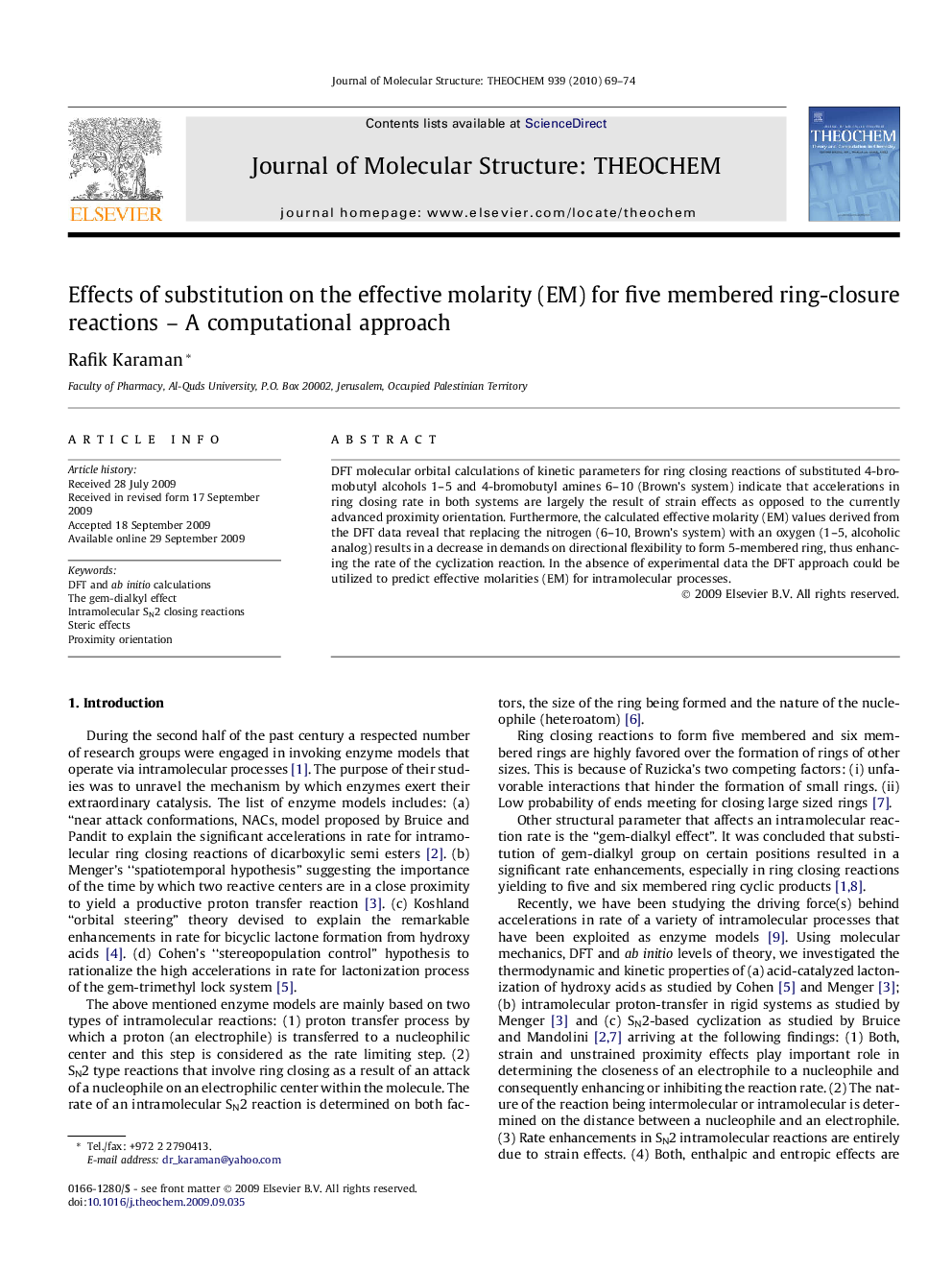| Article ID | Journal | Published Year | Pages | File Type |
|---|---|---|---|---|
| 5417089 | Journal of Molecular Structure: THEOCHEM | 2010 | 6 Pages |
Abstract
DFT molecular orbital calculations of kinetic parameters for ring closing reactions of substituted 4-bromobutyl alcohols 1-5 and 4-bromobutyl amines 6-10 (Brown's system) indicate that accelerations in ring closing rate in both systems are largely the result of strain effects as opposed to the currently advanced proximity orientation. Furthermore, the calculated effective molarity (EM) values derived from the DFT data reveal that replacing the nitrogen (6-10, Brown's system) with an oxygen (1-5, alcoholic analog) results in a decrease in demands on directional flexibility to form 5-membered ring, thus enhancing the rate of the cyclization reaction. In the absence of experimental data the DFT approach could be utilized to predict effective molarities (EM) for intramolecular processes.
Related Topics
Physical Sciences and Engineering
Chemistry
Physical and Theoretical Chemistry
Authors
Rafik Karaman,
